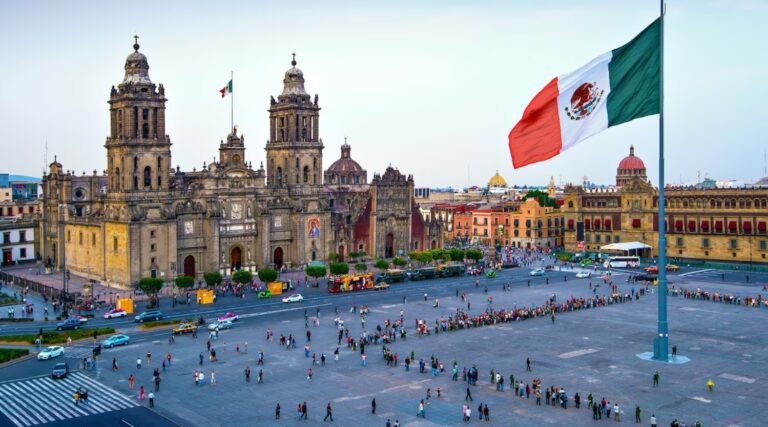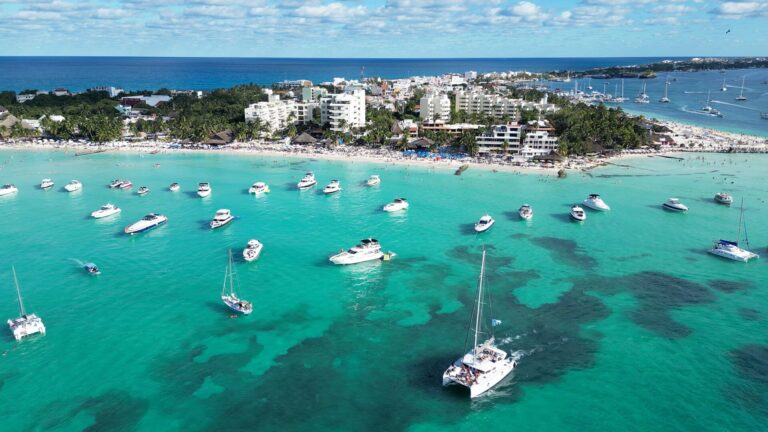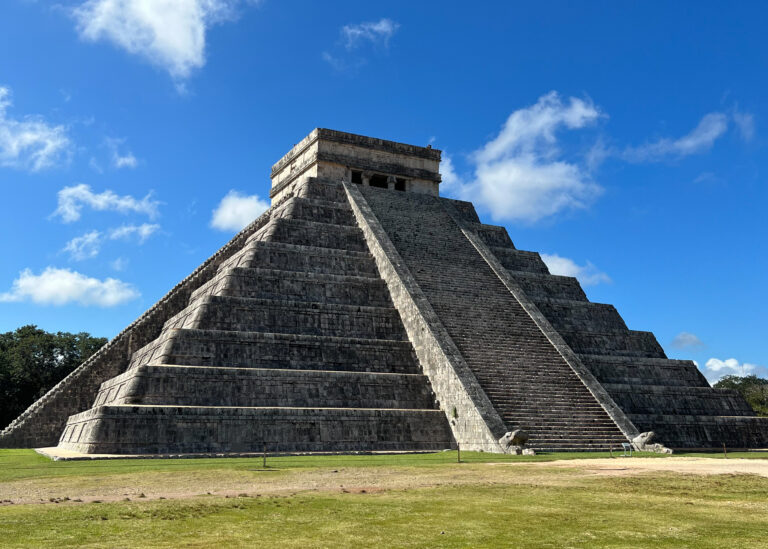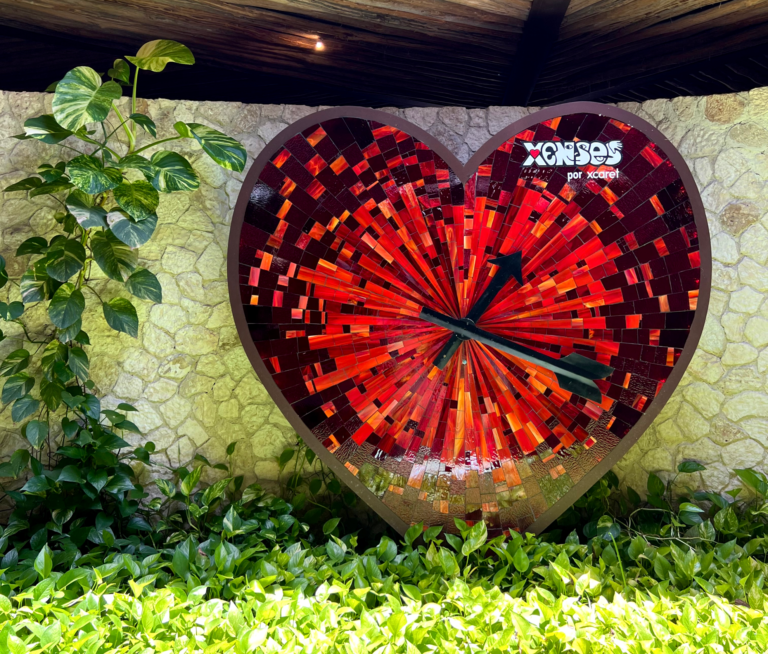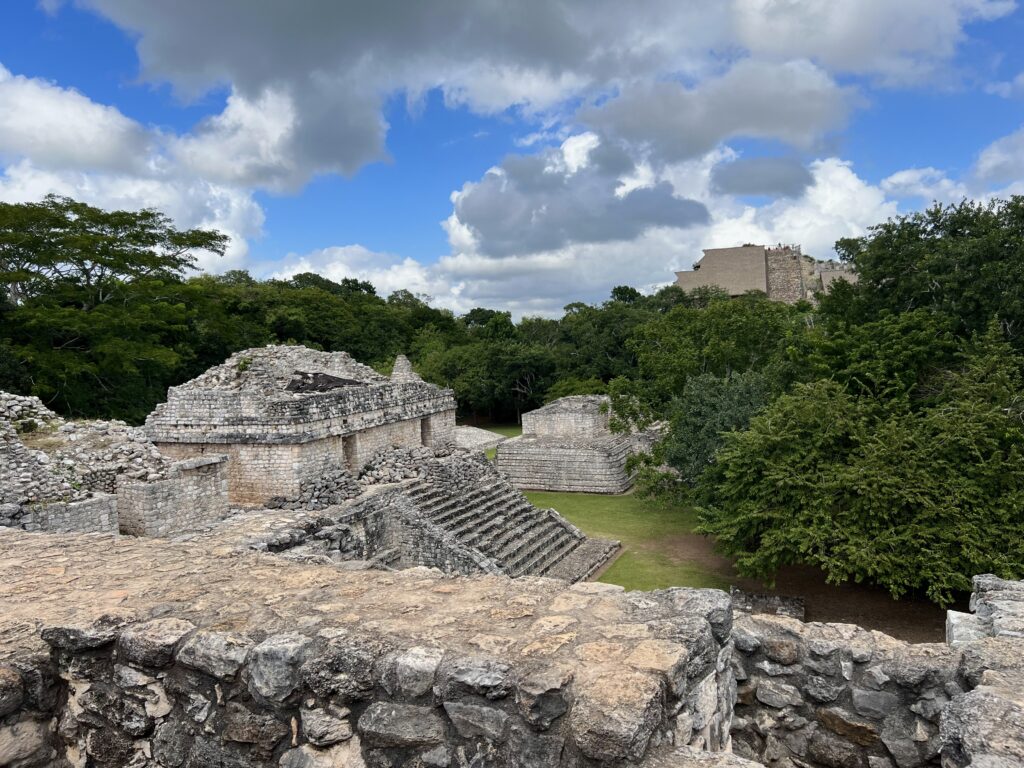
Whenever people visit Cancun, the Riviera Maya, or other parts of Quintana Roo, they often look for tours to complement their beach time with a bit of Mayan history. Most end up going to the renowned Chichen Itza—indeed, many tour companies in and around Cancun offer day trips there. However, what few realize is that there are several lesser-known archaeological sites in the region that can be just as impressive. One of these are the Ek Balam ruins, located in the neighboring state of Yucatan. We’ve visited this site many times, and today we’re going to share everything we know about it: how to get there, what to see, what to pack, and more. Enjoy!
Where Are the Ek Balam Ruins Located?
Ek Balam is located in the northern part of the Yucatan Peninsula in Mexico, specifically in the municipality of Temozon, about 30 minutes north of the city of Valladolid (also in the state of Yucatan). It’s roughly a two-hour drive from Cancun and about an hour and a half from Merida, making it accessible as a day trip from several major destinations in the region.
The Origins and Rise of Ek Balam
Ek Balam, located in the heart of the Yucatan Peninsula, is an ancient Mayan archaeological site whose name can translate to either “Black Jaguar” or “Star Jaguar,” derived from the Yucatec Maya words “Ek” (black or star) and “Balam” (jaguar).
FUN FACT: At the entrance to the ticket office, you will see graffiti of a black Jaguar. Now you know why.
Over the centuries, Ek Balam rose to prominence as the capital of the Talol kingdom, flourishing from the Preclassic period (around 300 BC) through the Postclassic period. The city’s greatest achievements occurred during the Late Classic era, particularly under the rule of Ukit Kan Leʼk Tokʼ.
Ukit Kan Leʼk Tokʼ was a prominent Mayan ruler of Ek Balam, who reigned during the site’s peak in the Late Classic period, when Ek Balam served as the capital of the Talol kingdom.
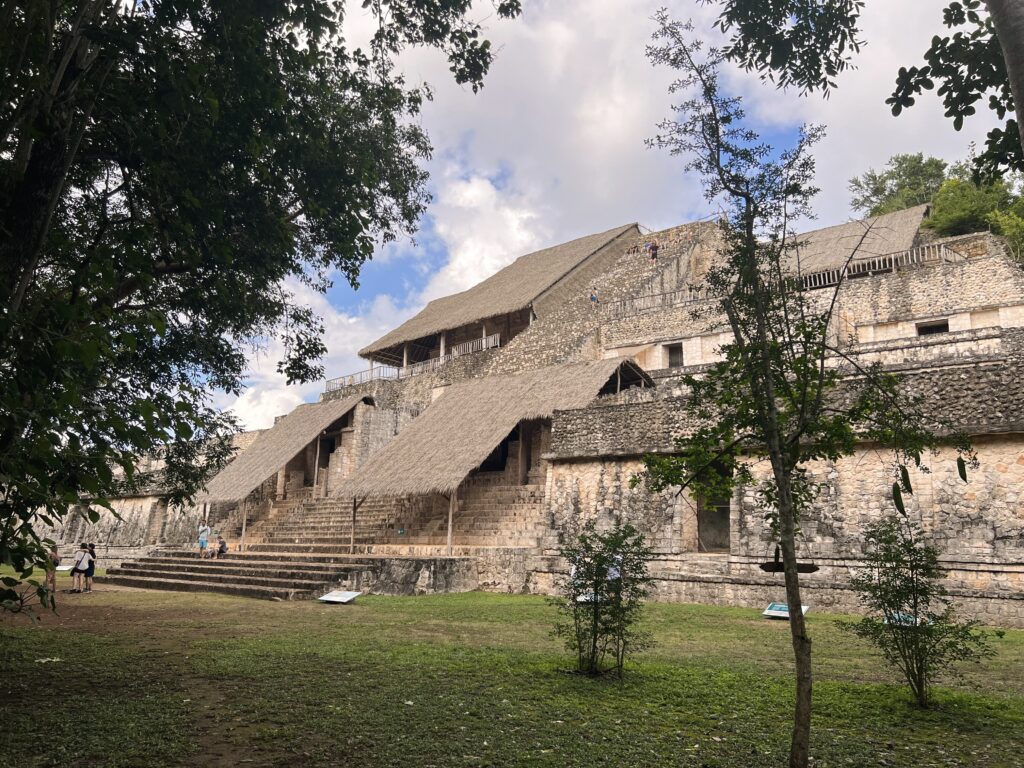
Acropolis: The Main Structure of the Ek Balam Ruins
One of the most notable features of the Ek Balam ruins is the Acropolis, a massive structure measuring approximately 146 meters in length, 55 meters in width, and 29 meters in height. This monumental building houses multiple rooms and passageways and is also where the tomb of Ukit Kan Leʼk Tokʼ lies, known as Sak Xok Nahh (White House of Reading).
Archaeologists have uncovered over 7,000 artifacts from this burial chamber. These artifacts included ceramic vessels and precious objects crafted from shell and tumbaga—a gold-copper alloy prized by the Maya. Beyond its size and historical significance, the Acropolis is remarkable for its intricately preserved stucco sculptures. They feature winged figures and other mythological motifs that set Ek Balam apart from many other Mayan sites. Visitors to the site can still climb the Acropolis, enjoying panoramic views of the surrounding jungle and immersing themselves in the architectural achievements of the ancient Maya.
Beyond the Acropolis, Ek Balam Yucatan stands out for its unique layout and defensive measures. Two concentric walls encircle the site. It is a very uncommon feature among Mayan cities, hinting at a strategic or militaristic element in Ek Balam’s past. Rediscovered in the late 19th century by the archaeologist Desire Charnay, Ek Balam did not receive extensive excavation efforts until the 1980s and 1990s. These more recent undertakings yielded significant insights into the urban design, cultural practices, and socio-political importance of the city.
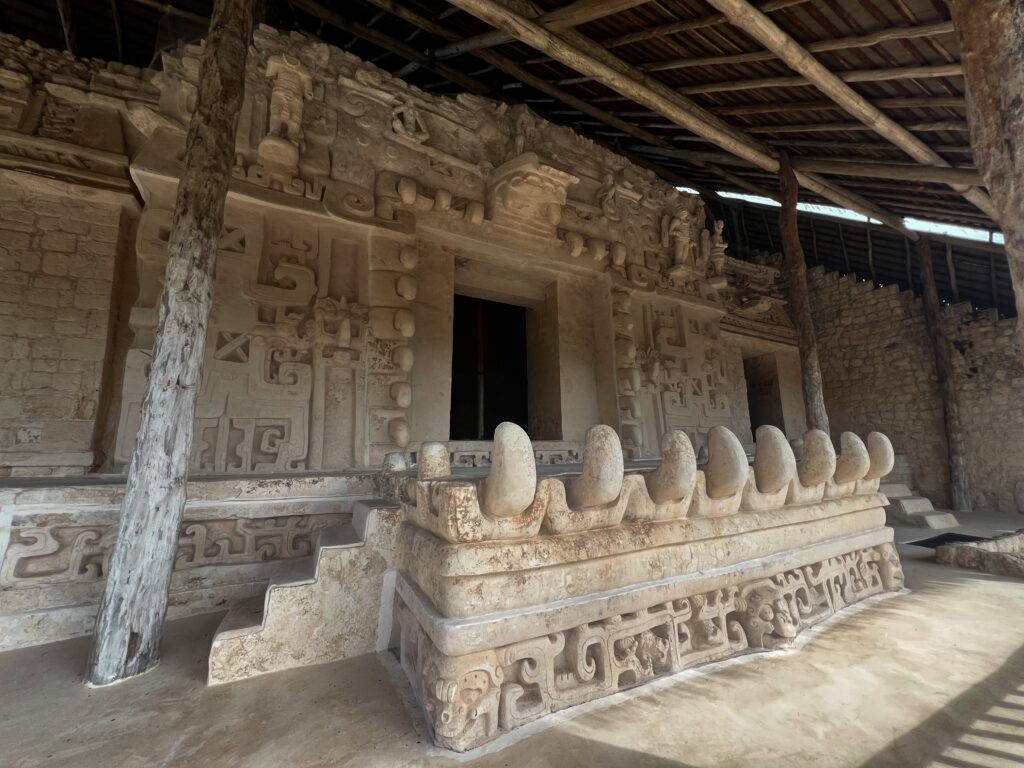
What to Expect at the Site?
Unlike its more famous counterpart, Chichen Itza, the ruins of Ek Balam are far less known to the general public. As a result, they are not as commercialized and typically see fewer visitors. In the five or six times we have visited, it has never been as busy as Chichen Itza can get. There’s less crowd noise, and you can explore the ruins in near silence.
The site itself is extremely green, with lush jungle in and around the archaeological zone. There is plenty of shade from the sun. Depending on the time of year you visit the Yucatan, this shade can be very important. During the summer, temperatures can soar and affect how long you’re comfortable staying out in the open.
A notable improvement we observed on our last visit is the addition of small information plaques on many of the structures. These plaques explain what each structure is and offer a bit of background. This makes the experience more informative for those exploring independently.
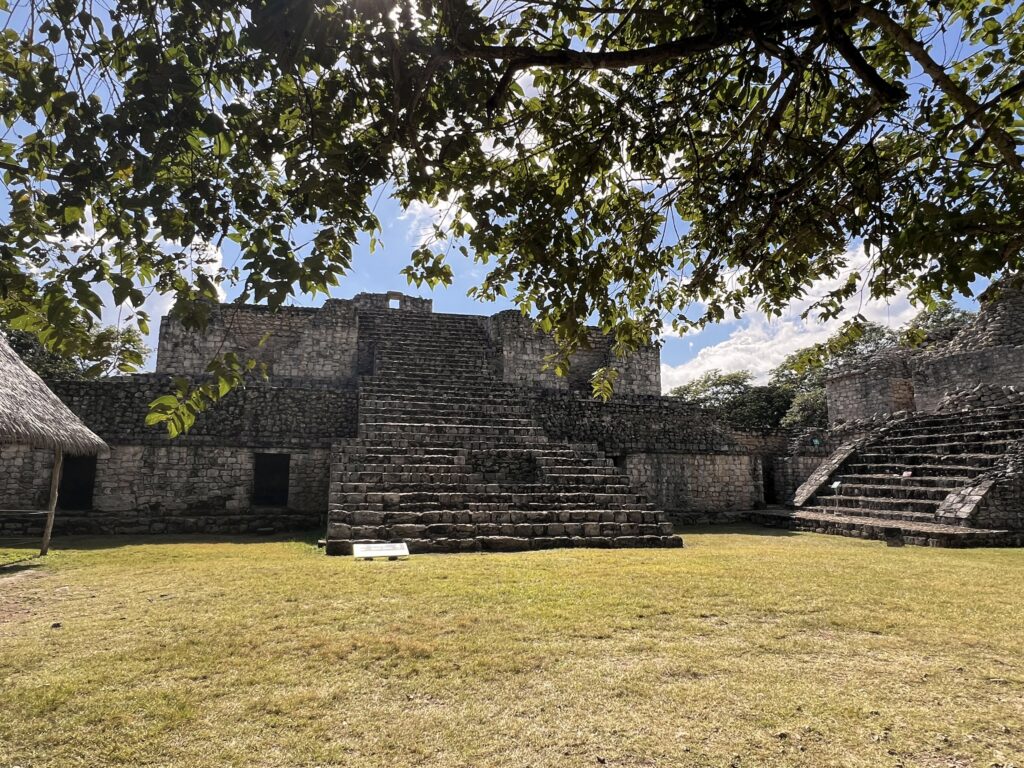
Are You Allowed To Take Pictures and Film at the Site?
You can use your phone to take photos. However, if you plan on bringing professional equipment (such as a gimbal or tripod), these items are typically not permitted—even for a fee. Another peculiarity is that you’ll need to pay a fee for filming with a GoPro. This may seem unusual, given that a GoPro is an action camera and not necessarily suited for capturing architectural details. Yet it still falls under restricted equipment at many archaeological sites.
Entrance Fee and Opening Hours
If you’re planning a trip to Ek Balam, be sure to check the latest admission fees and opening hours before you go. The site generally opens around 8:00 a.m. and closes by late afternoon (around 5:00 p.m.), but exact times can vary. You may encounter separate charges—one levied by the federal government and another by the state of Yucatan—so it’s a good idea to bring sufficient cash. Credit card facilities may be limited or unavailable, so plan accordingly to avoid any delays at the ticket booth. Last time we went there, they were able to accept bank cards, next time, who knows.
Amenities
The site offers a decent-sized parking lot, and the entrance is easily located with its shaded structure. This central area provides ticket sales, restrooms, and a resting area.
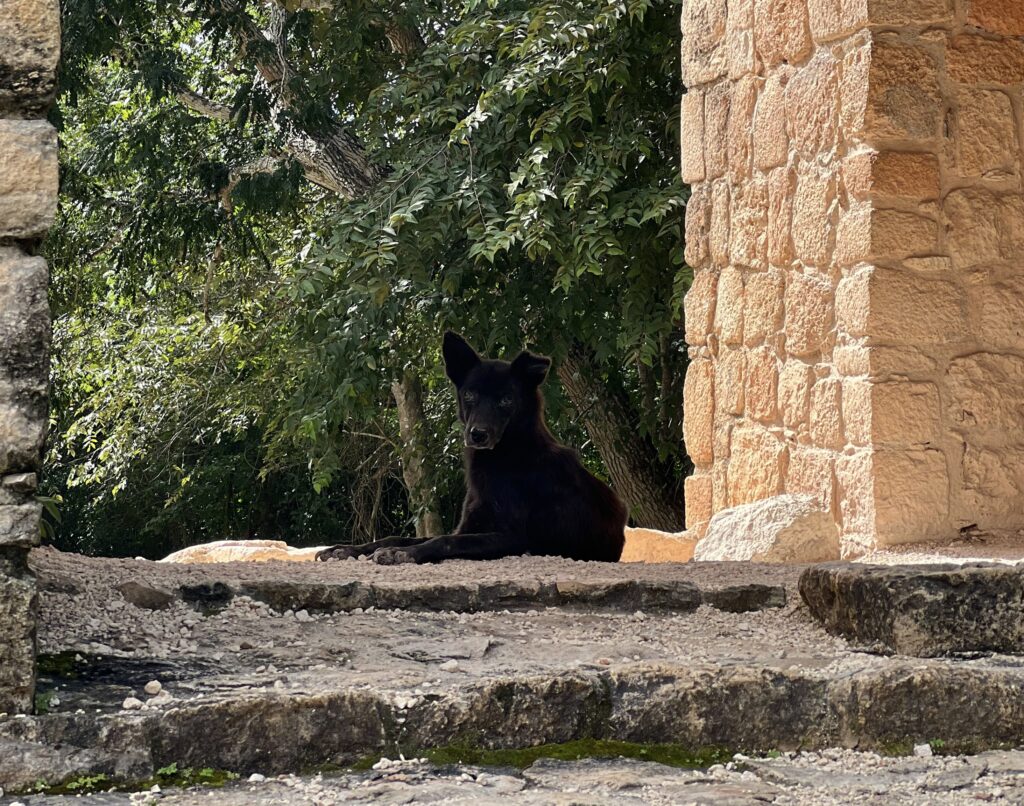
Best Times to Visit Ek Balam Ruins
For a more comfortable experience, aim to arrive early in the morning or later in the afternoon. Not only will you avoid the peak midday heat, but you’ll also have fewer crowds to contend with. As a result, you can explore the ruins in relative peace.
PRO TIP. On Sundays the entrance is free for Mexican citizens and residents, so expect more people.
The Yucatan Peninsula has a distinct rainy season (roughly June through October) and a dry season (November through May). In the rainy season, unexpected showers can cool things down but may make some walkways slippery—keep this in mind when choosing your footwear.
Is Hiring a Guide Worth It?
If you’re a history buff looking to make the most of your visit, consider hiring an authorized guide. Guides can enrich your experience by sharing insights you might not find in guidebooks or on information plaques. At the entrance to Ek Balam, you can often find Spanish- and English-speaking guides available for hire. During our last visit, we also saw offers for French- and Italian-speaking guides.
As for the guide fee, it tends to vary based on factors like group size, the length of the tour, and the guide’s level of expertise. Travelers commonly report paying somewhere in the range of 500–800 MXN (approximately USD 25–40) for a tour. Because these fees aren’t always fixed, it’s wise to ask about the cost upfront.
Can I Buy Souvenirs There?
Yes, you can buy souvenirs at Ek Balam. In fact, the overall shopping experience here is often much more relaxed compared to Chichen Itza. In our opinion, vendors at Chichen Itza can be somewhat aggressive. At Ek Balam, vendors typically take a more laid-back approach. They allow you to browse at your own pace, which many visitors appreciate. Kudos to them for maintaining a welcoming atmosphere.
How to Pack For Your Visit To Ek Balam Ruins?
The ruins are surrounded by jungle (selva), so mosquitoes and other insects are common; be sure to bring bug repellent. As noted previously, the sun can be intense here. So remember to apply sunscreen to any exposed skin and wear a hat or a cap. The archaeological site isn’t especially large, but exploring it does involve a fair amount of walking. Don’t forget to wear comfortable shoes, they are essential. Lastly, don’t forget to bring water and snacks for your visit.
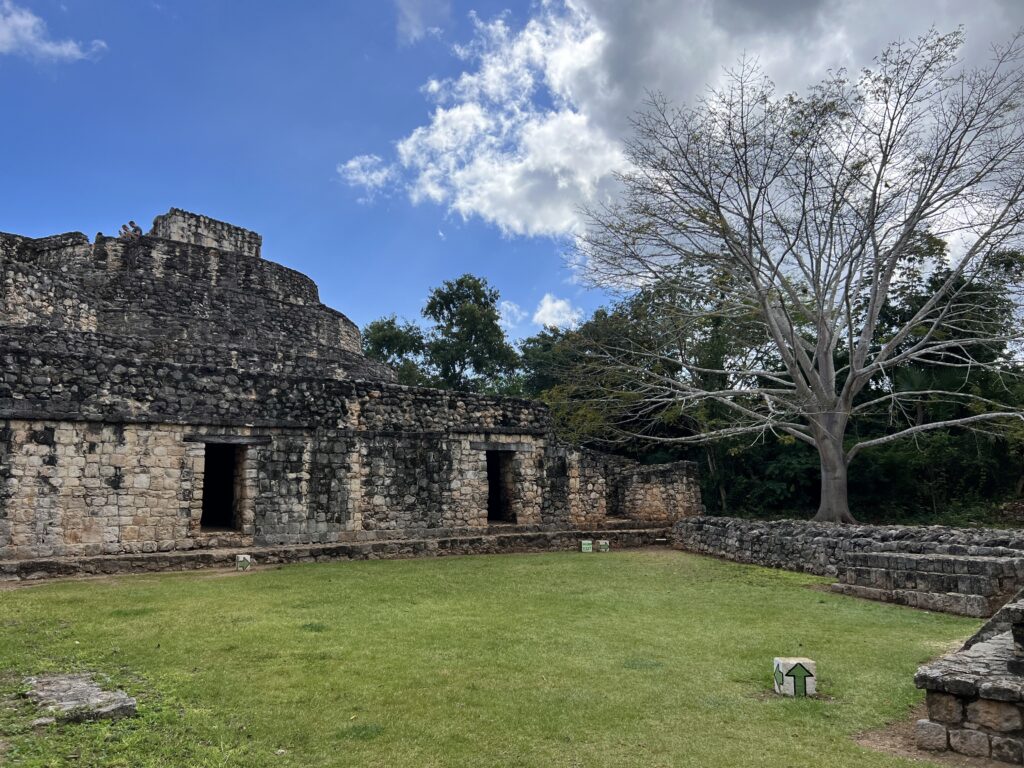
Etiquette, Safety, and Local Community Support
As with any archaeological site, it’s important to follow posted guidelines and respect barriers. Avoid touching fragile stucco carvings, don’t climb areas that are roped off, and always dispose of your trash properly. While vendors at Ek Balam tend to be easygoing, purchasing handcrafted souvenirs can support the local community. If you choose to hire a local guide, you’ll not only gain valuable insights into Ek Balam’s history but also help sustain the region’s cultural heritage
Modern Appeal and Natural Wonders
Today, the appeal of Ek Balam extends beyond its architectural marvels. Nearby lies Cenote XʼCanche, a natural sinkhole where visitors can cool off with a refreshing swim. It is a great opportunity to appreciate the ecological wonders that enrich the history of Ek Balam. Whether one is drawn to its impressive pyramids, intricate stucco carvings, or rare defensive walls, the Ek Balam ruins provide a compelling glimpse into Mayan civilization. From the legacy of Ukit Kan Leʼk Tokʼ, carefully preserved within the Acropolis, to the verdant jungle vistas that surround every structure, Ek Balam remains a must-see destination for anyone interested in the grandeur and mystique of Mayan culture.
To discover more of the captivating Mayan ruins Mexico has to offer, be sure to explore our article, ‘Why Are Mexico’s Mayan Ruins a Must-See for Everyone?’

